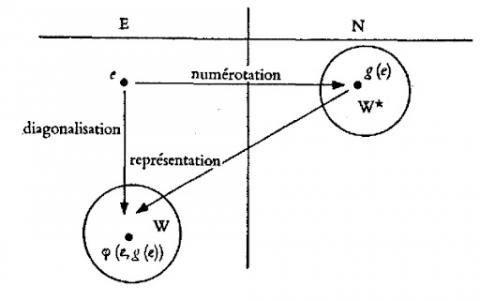
Fil d'Ariane
- Accueil/
- Évènements/
- Print, Code, Data: New Media Disruptions and Scientific Visualization

Conférence par Sietske Fransen & Leonardo Impett (Max-Planck-Institut für Kunstgeschichte)
This paper discusses changes in scientific diagramming in response to new media disruptions: the printing press, and online data/research code. In the first case, the role of handwritten documents and the visual forms of scientific diagramming re-align in response to the circulational economics and medial accessibility of the printing press in early modern Europe. In the second, published research code unsettles the principle, common in the second half of the twentieth century, that a peer-reviewed article in computer science ought to outline its methods with enough detail to enable repeatability.
The printing press brought benefits as well as restrictions to the inclusion of diagrams in scientific works. Some of the downsides were that not every printer was able to manufacture separate wood blocks and/or copper plates that could contain the diagram as if hand-drawn. Instead, diagrams were often made entirely out of typeface. On the other hand, the quick spread of the use of printed books in addition to manuscripts, opened new roles for the manuscript as a medium of creativity. In the early days of print, it is therefore in manuscripts that we can find the visualization of scientific processes, which form the background to printed material.
The information sufficient for 'replicability' in computer science (which in the physical sciences has meant 'formal experimental methodology', but in computer science is epistemically closer to the research itself) had most often been included in tables, schematizations and heavily-labelled diagrams, sometimes augmented by so-called 'pseudocode' (a kind of software caricature, which cannot itself be run on a machine). The inclusion of research code thus dramatically displaces the role of scientific diagrams in machine learning research: from a notational system which ideally contains sufficient information to reproduce an algorithm (akin to electrical circuit diagrams) to a didactic visualization technique (as in schoolbook diagrams of the Carbon Cycle). In Badiou's (1968) terminology, diagrams shift from symbolic formal systems to synthetic spatializations of non-spatial processes.
The relationship between 'research output' (as the commodity produced by computer-science research groups) and its constituent components (text, diagram, code, data) is further destabilized by deep learning techniques (which rely on vast amounts of training data) : no longer are algorithms published on their own, but rather trained models, assemblages of both data and software, again shifting the onus of reproducibility (and, therefore, the function of scientific notation). The changed epistemological role of neural network visualizations allows for a far greater formal instability, leading to the rich ecology of visual solutions (Alexnet, VGG, DeepFace) to the problem of notating multidimensional neural network architectures.
By comparing the impact of new media on the use, form and distribution of diagrams in the early modern period, with the impact of code on the role of diagrams in computer science publications, we are opening up a conversation about the influence of new media on science, both in history and in current practice.